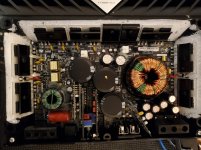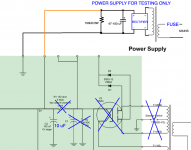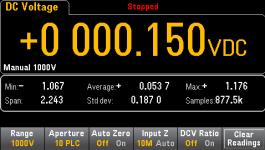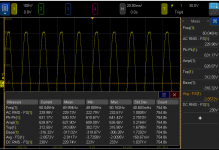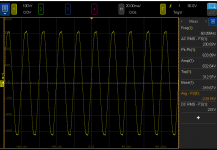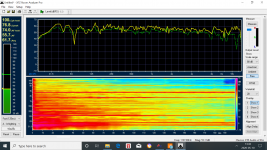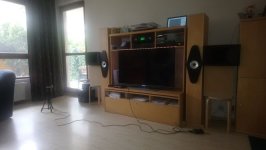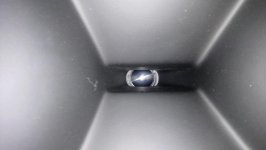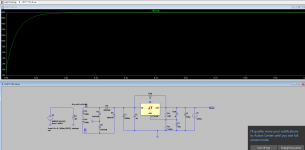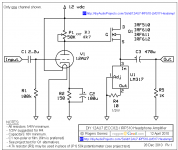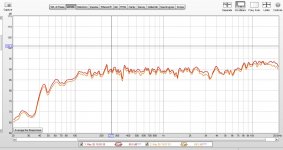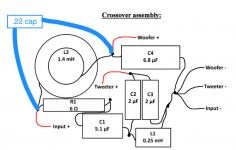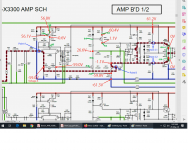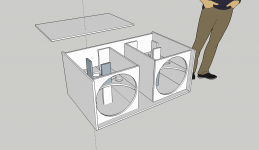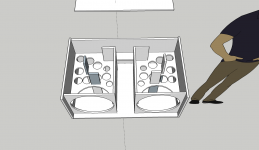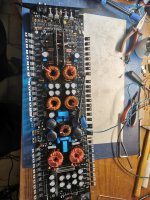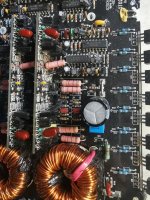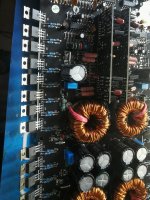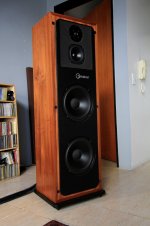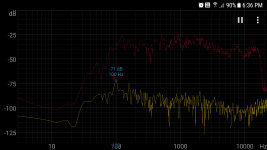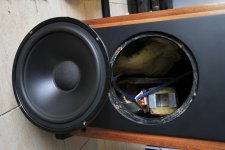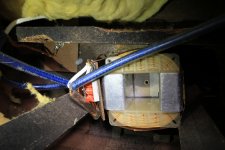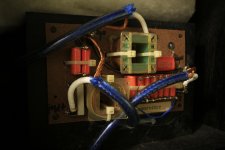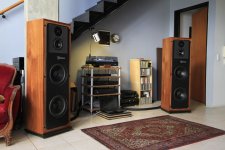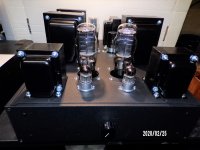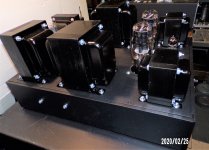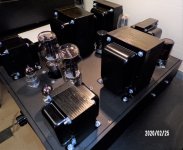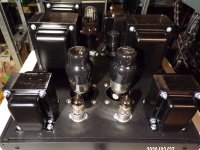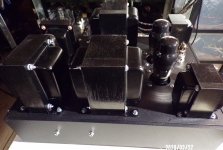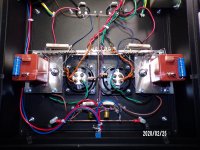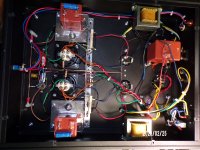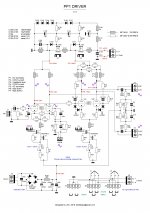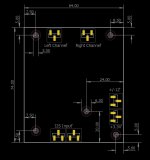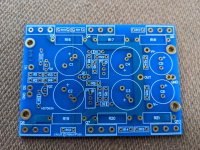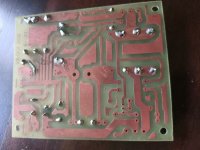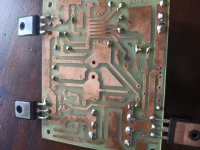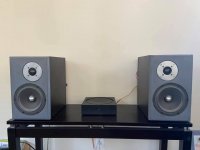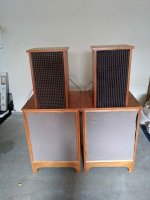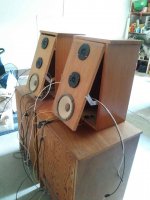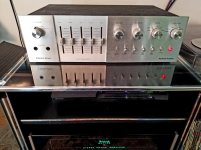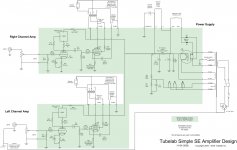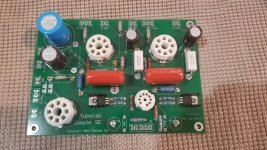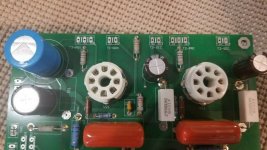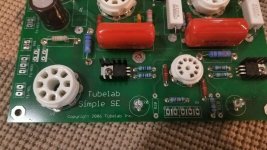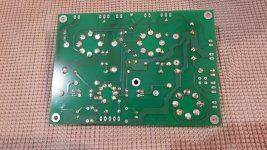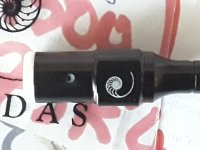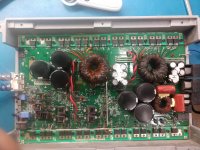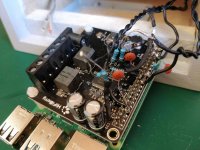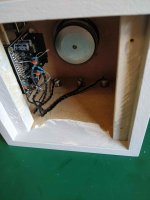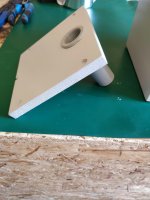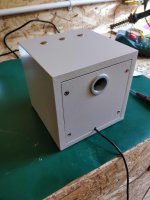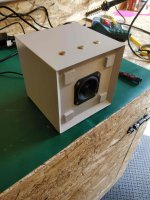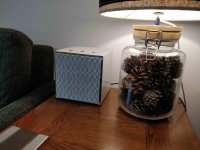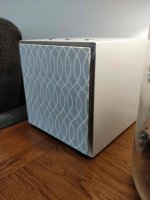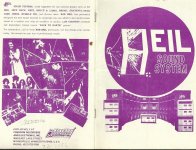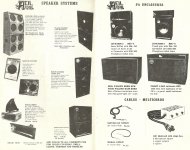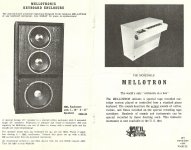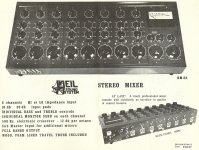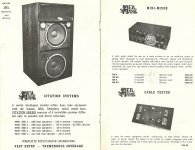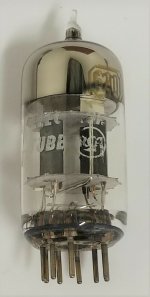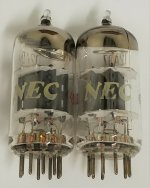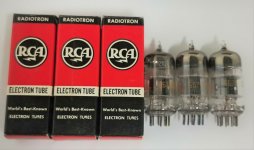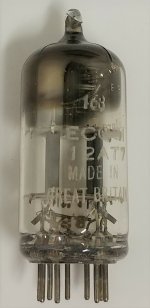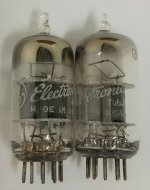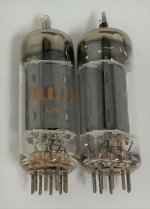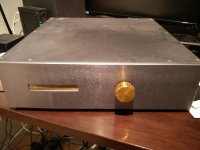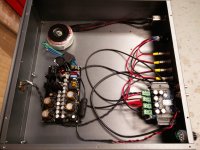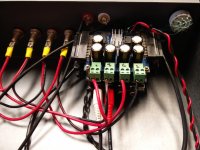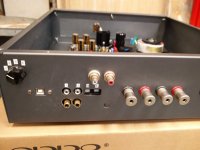Scoping higher voltages with HP 54100D
- By deafen
- Equipment & Tools
- 6 Replies
I've been effectively gifted this mid-80's behemoth, and as it turns out I've got some use for it in the later stages of a project I'm working on. Unfortunately, it's got very low voltage limits, and I don't have the requisite pieces parts to work around that. I work on tube amps at audio frequencies.
I've got two 54001A probes - these are active, with 10k impedance, but a limit of 20V peak. Going to have a hard time scoping a phase inverter with that.
I've also got two 54002A modules, which are 50R impedance and a max 5Vrms. Not a lot of interesting places on a tube amp with that little voltage. I don't have probes for these, but they're BNC.
So. I could build a voltage divider to give me 100:1 attenuation and just hook up the 54001A probes to that when necessary. Upside, cheap. Downside, kinda unwieldy, feels kludgey.
As for the 50R inputs, there's a Tektronics 100x (5k) probe that I can pick up on the auction site pretty cheap. But the following input impedance in most of the places I'd be scoping is 1M or more, so sticking a 5K probe in parallel seems like an excellent way to blow up an input. Or maybe just be super inaccurate.
Third option, pop for a pair of 54003A modules ($40) and a pair of 100x probes from Amazon ($20). Upside, it's clean. Downside, I'm limited to 200V peak.
Which of these makes the most sense? And what was HP thinking, not providing any way to scope anything remotely HV?
I've got two 54001A probes - these are active, with 10k impedance, but a limit of 20V peak. Going to have a hard time scoping a phase inverter with that.
I've also got two 54002A modules, which are 50R impedance and a max 5Vrms. Not a lot of interesting places on a tube amp with that little voltage. I don't have probes for these, but they're BNC.
So. I could build a voltage divider to give me 100:1 attenuation and just hook up the 54001A probes to that when necessary. Upside, cheap. Downside, kinda unwieldy, feels kludgey.
As for the 50R inputs, there's a Tektronics 100x (5k) probe that I can pick up on the auction site pretty cheap. But the following input impedance in most of the places I'd be scoping is 1M or more, so sticking a 5K probe in parallel seems like an excellent way to blow up an input. Or maybe just be super inaccurate.
Third option, pop for a pair of 54003A modules ($40) and a pair of 100x probes from Amazon ($20). Upside, it's clean. Downside, I'm limited to 200V peak.
Which of these makes the most sense? And what was HP thinking, not providing any way to scope anything remotely HV?
